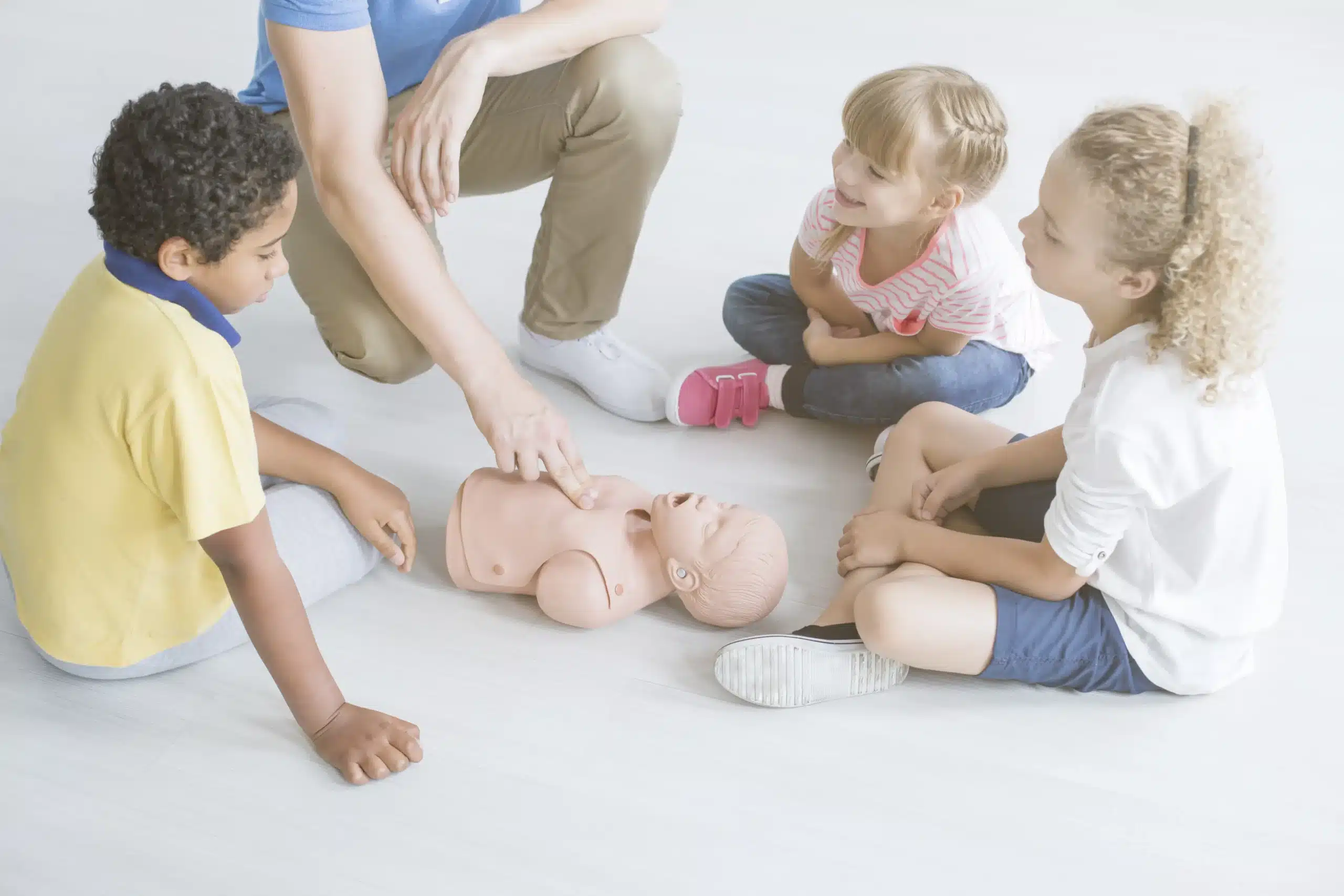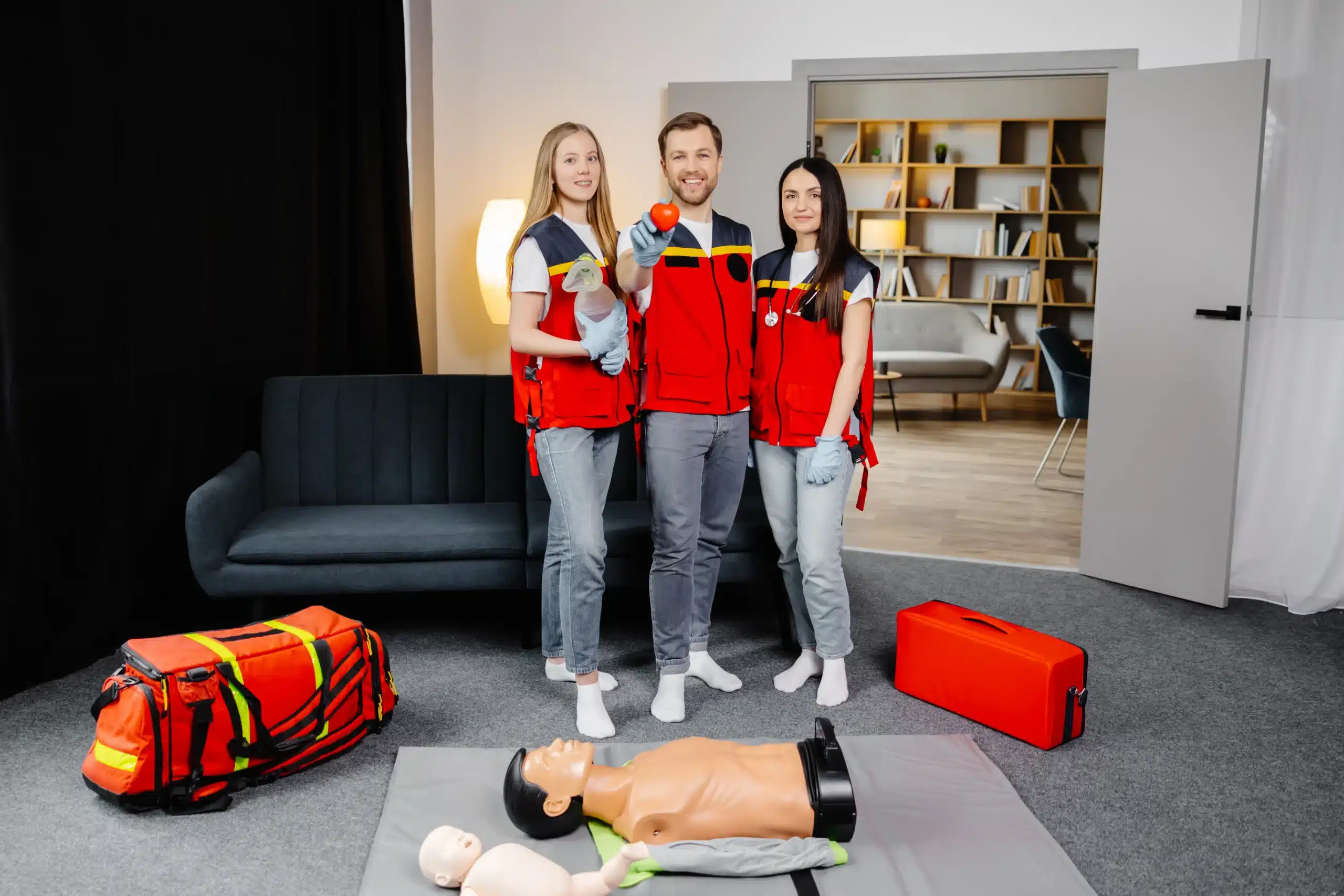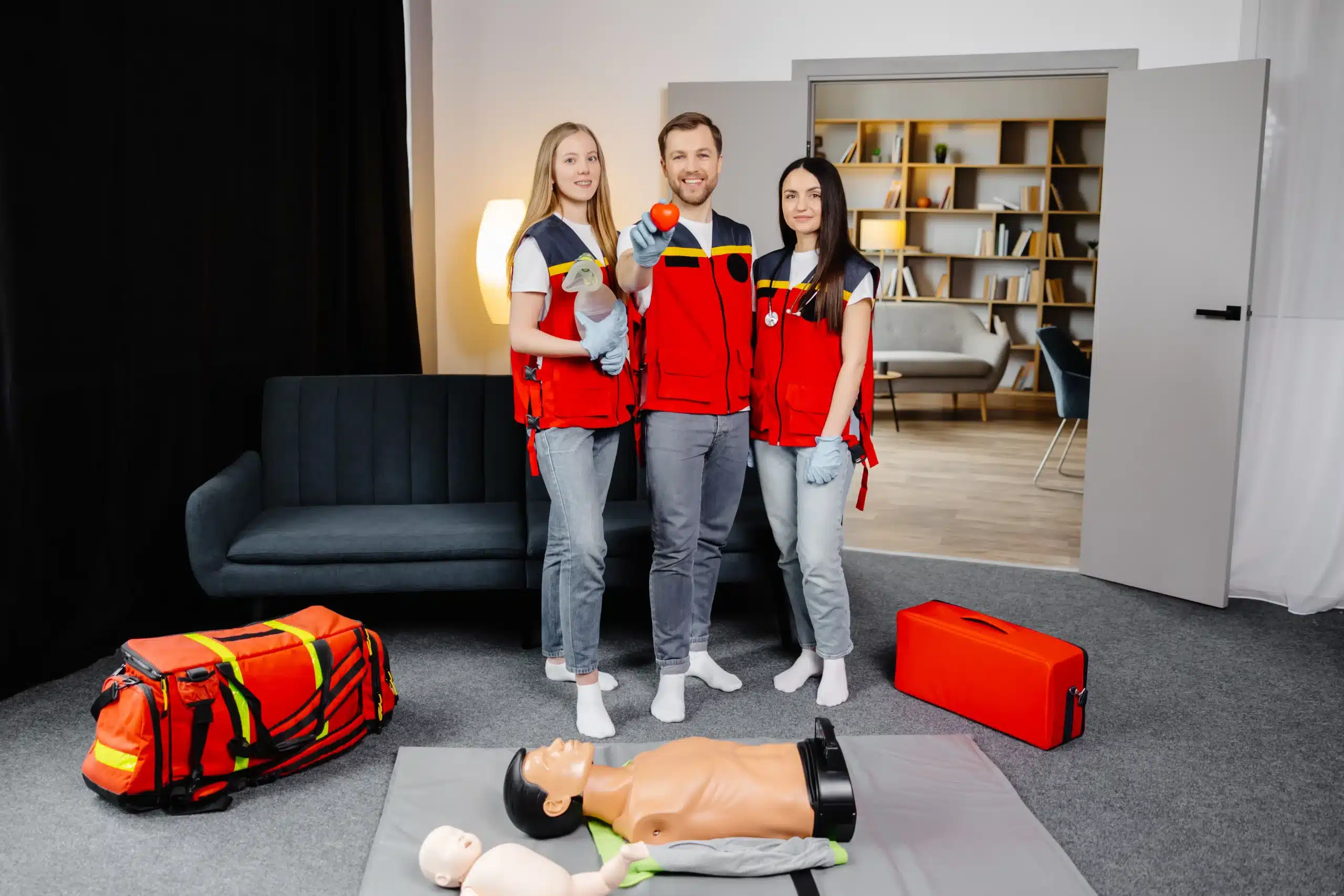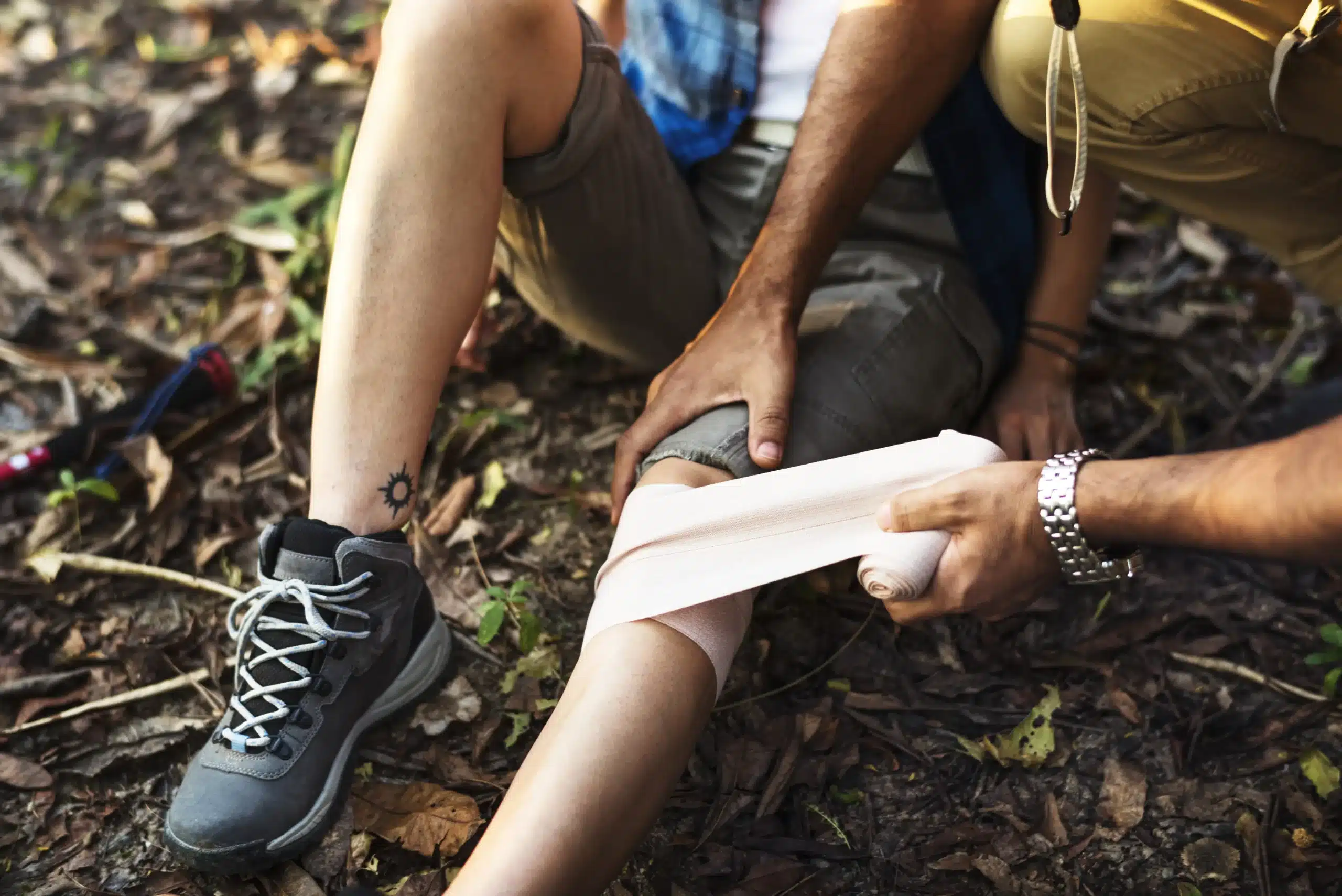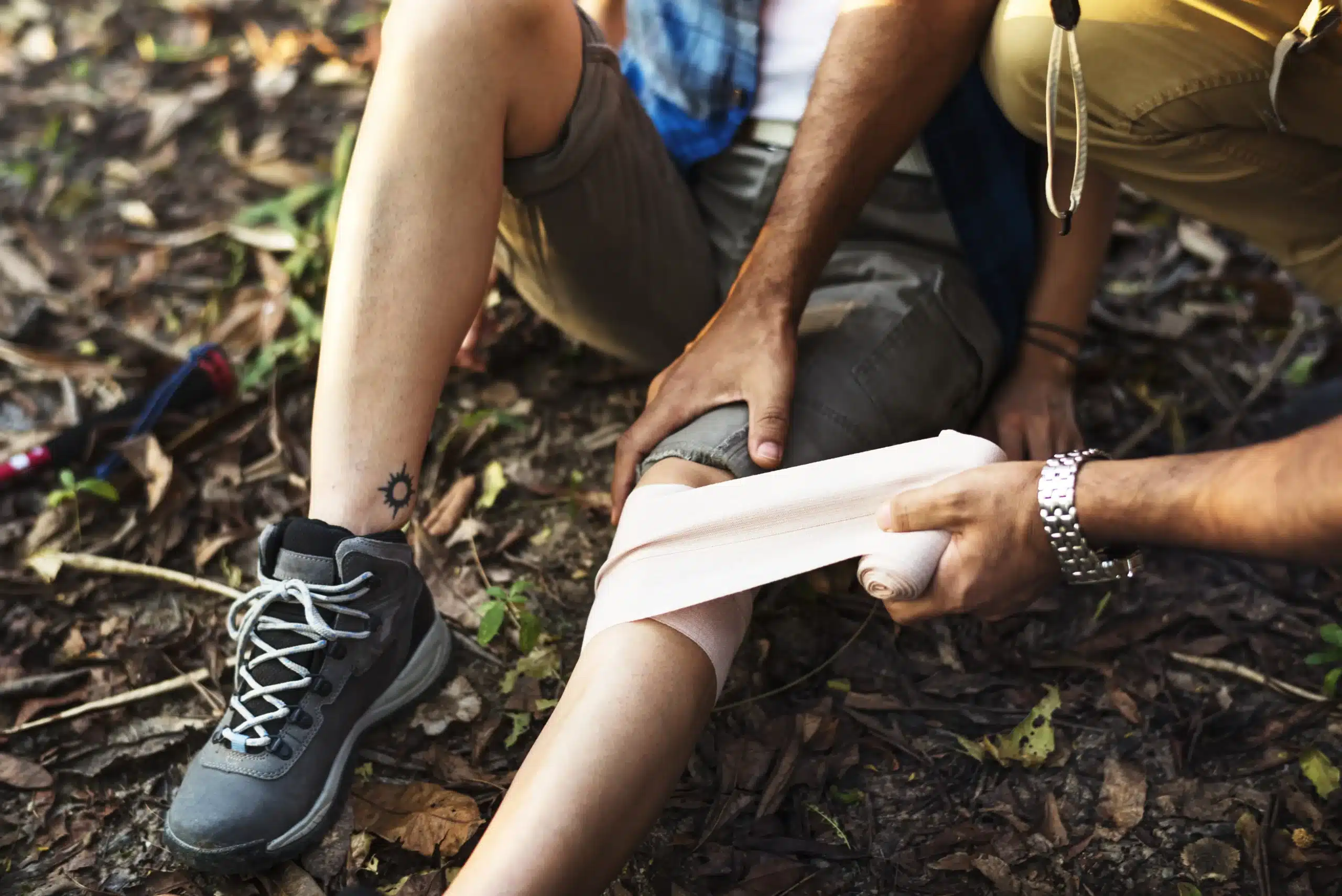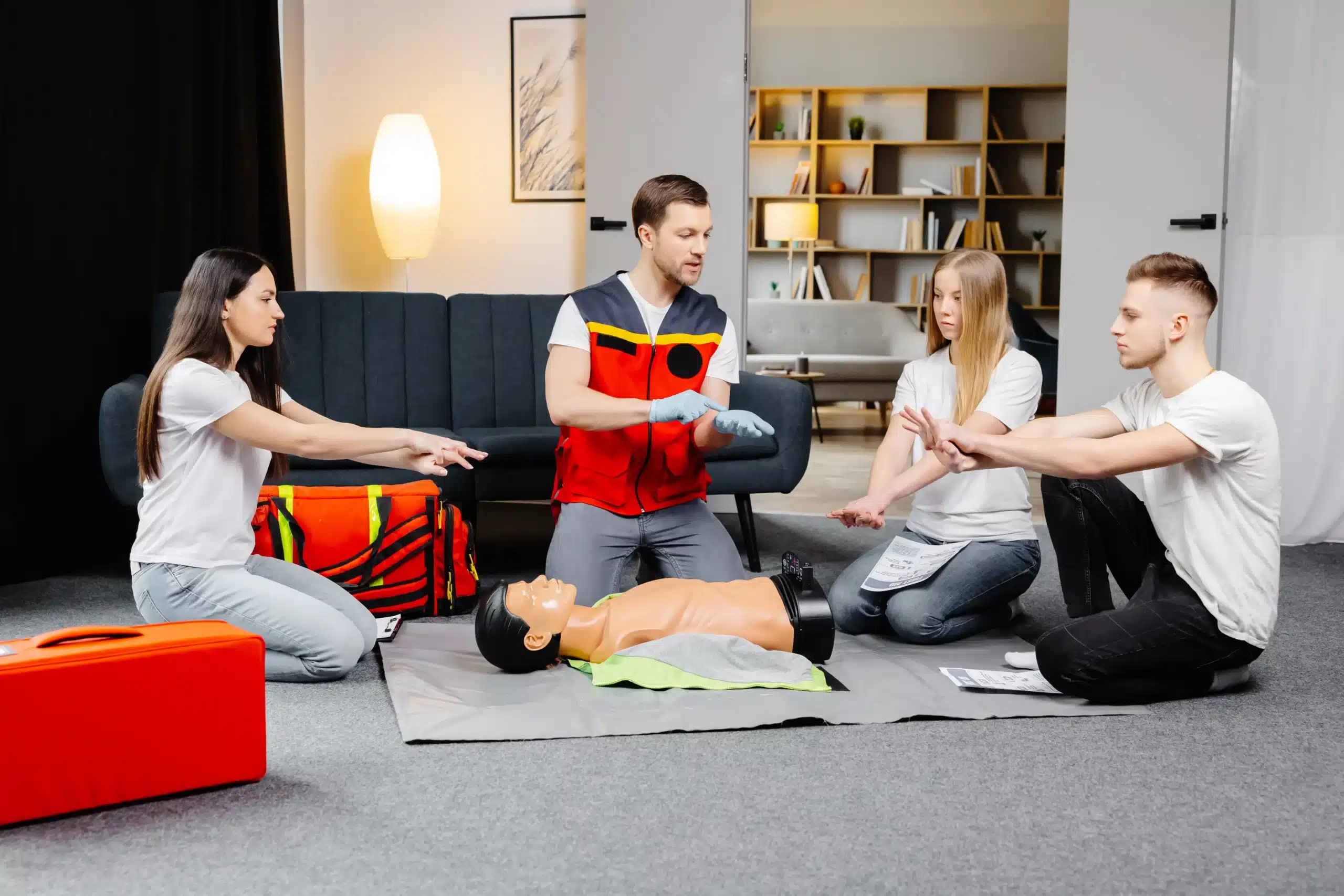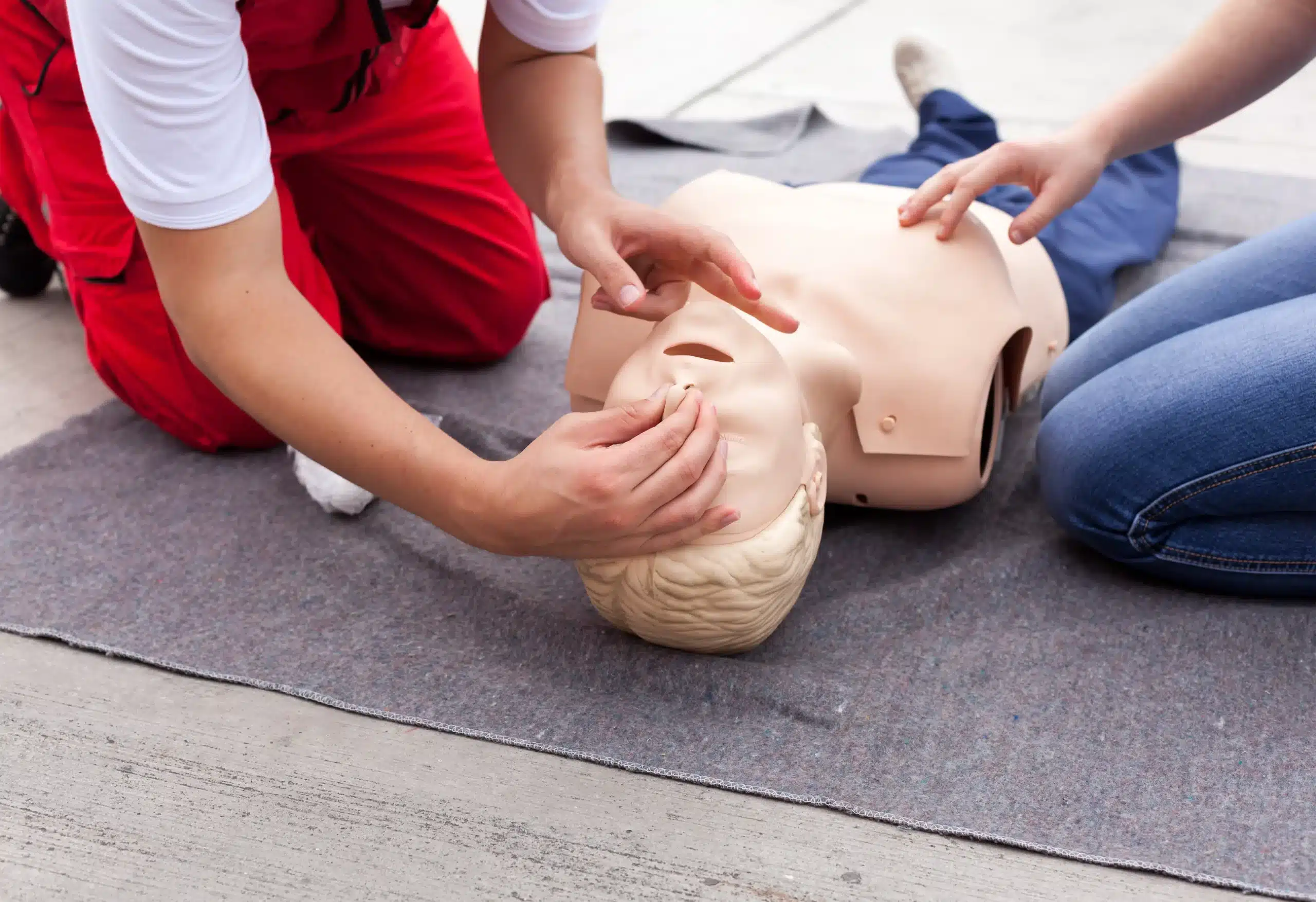Empowering yourself with life-saving skills is one of the most valuable things you can do, both for yourself and your community. BLS classes provide the knowledge and hands-on training to respond effectively in medical emergencies, giving you the confidence to provide critical care when it matters most. Whether you’re a healthcare professional, a concerned caregiver, or simply someone who wants to be prepared, finding “BLS classes near me” is the first step. This guide will walk you through the process of choosing the right class, understanding the costs, and preparing for your training. Let’s explore how you can become equipped to handle emergencies with confidence and skill.
Key Takeaways
- BLS certification provides essential life-saving skills: Learn CPR, AED use, and choking relief to confidently handle medical emergencies. Choose a course format (in-person, online, or blended) that fits your needs.
- Select a reputable BLS provider: Seek AHA accreditation and check student reviews. Prioritize providers who offer feedback and group interaction for a richer learning experience.
- Regular practice maintains your skills: Consistent practice and continuing education are key to retaining and improving your BLS abilities. Stay updated on the latest guidelines to ensure you’re always prepared for emergencies.
What are BLS Classes?
Basic Life Support (BLS) classes teach you the skills to respond to life-threatening emergencies. Think cardiac arrest, respiratory distress, and choking. These classes cover high-quality CPR, using an AED (automated external defibrillator), and relieving airway obstructions. BLS certification is essential for healthcare providers, first responders, and anyone who wants to be prepared for a medical crisis. It empowers you to confidently provide immediate care and potentially save a life. The training covers core life-saving techniques and emphasizes quick action and effective teamwork during emergencies. Studies show that regular BLS training00264-5/fulltext) and practice improve both skill retention and confidence. Feedback during training also enhances performance. Whether you’re a medical professional needing to meet licensing requirements or someone wanting to learn life-saving skills, BLS certification gives you a foundation for responding effectively in critical situations. It’s often a prerequisite for advanced certifications like ACLS (Advanced Cardiovascular Life Support) and PALS (Pediatric Advanced Life Support).
Types of BLS Classes
Choosing the right BLS class format depends on your learning style, schedule, and preferences. Let’s explore the three main types: in-person, online, and blended learning.
In-Person BLS Classes
In-person BLS classes offer a hands-on learning experience with direct interaction with a certified instructor. This format is great for people who learn best through tactile activities and real-time feedback. You’ll practice skills on mannequins and have your questions answered immediately. The American Red Cross offers in-person BLS training, providing a structured environment for learning these essential skills. This traditional approach is ideal for those who value face-to-face instruction and the camaraderie of a classroom setting. For those in Napa, California, Safety Training Seminars offers in-person classes with a focus on excellent customer service and the lowest prices in Napa County.
Online BLS Classes
Online BLS classes provide flexibility and convenience, allowing you to learn at your own pace and on your own schedule. This format typically involves interactive modules, videos, and online assessments. However, keep in mind that the American Heart Association (AHA) BLS course requires an in-person skills assessment component. While the coursework can be completed online, you’ll still need to demonstrate your skills to a certified instructor in person to receive your certification. This hybrid approach allows you to study the material conveniently while still gaining the practical experience necessary for real-life scenarios.
Blended Learning BLS Classes
Blended learning combines the convenience of online learning with the benefits of hands-on practice. You’ll complete the theoretical coursework online at your own speed, then attend an in-person skills session to practice and demonstrate what you’ve learned. The American Red Cross also offers this blended learning format, making it a popular choice for those balancing busy schedules with the need for comprehensive training. This approach offers the best of both worlds, allowing you to absorb information independently and refine your skills with expert guidance. If you prefer a combination of online and in-person learning, blended learning might be the perfect fit.
Find Reputable BLS Certification Providers
Finding the right BLS certification provider is key to receiving high-quality training that prepares you for real-life emergencies. Here’s what to look for:
Look for Accreditation and Credentials
First, confirm that any potential provider is accredited by a recognized organization like the American Heart Association (AHA). Accreditation means the training program meets established standards for quality and effectiveness. A study published in Resuscitation Journal00264-5/fulltext) emphasizes the importance of proper BLS training for equipping providers with effective CPR skills. This highlights why choosing an accredited provider is so important—it ensures your training aligns with established guidelines. For example, if you’re looking for BLS certification in Napa, always verify the provider’s credentials. Our BLS certification page details how we maintain high standards.
Evaluate Reviews and Testimonials
Beyond accreditation, read reviews and testimonials from past students. These firsthand accounts can offer valuable insights into the quality of instruction and the overall learning experience. Research published on PubMed shows that incorporating feedback during training significantly improves BLS skill performance. Look for providers who actively seek and respond to student feedback, as this demonstrates a commitment to continuous improvement. This is especially helpful when comparing different BLS courses. You can find reviews for our courses on our website.
Understand BLS Class Costs
Understanding the cost of Basic Life Support (BLS) classes is a practical first step. It helps to know the average price range in your area so you can budget effectively and find a class that offers good value.
Average Local Pricing
BLS class costs in Napa, California, typically range from $70 to $100. This price usually covers the training, study materials, and certification fees. Remember that prices can vary based on the provider, the class format (in-person vs. online), and any additional features offered. Safety Training Seminars is known for offering competitive rates, so check their website for the most up-to-date pricing on their BLS course.
Find Discounts and Promotions
Many training centers offer discounts for group registrations, students, or returning customers. Look for seasonal promotions or special offers, too. Sometimes, providers bundle BLS training with other certifications like First Aid or CPR, offering a discounted package price. A quick call to your chosen provider, like Safety Training Seminars, can help you uncover any available discounts. You can also check their website for any ongoing promotions. Being proactive about finding discounts can make high-quality training more accessible.
What to Expect in a BLS Class
So, you’ve signed up for a BLS class—congratulations! Knowing what to expect can help you feel prepared and confident on the day. This section covers the core skills you’ll gain, typical class formats, and important certification details.
Core Skills You’ll Learn
BLS certification focuses on providing immediate care for life-threatening emergencies. In your class, you’ll learn how to recognize these emergencies and develop the skills to respond effectively. Core components include high-quality CPR for adults, children, and infants, along with techniques for using an AED and relieving choking. These skills empower you to make a real difference in critical situations. You’ll learn the latest AHA guidelines for CPR, AED use, and airway management.
Class Duration and Format
BLS classes are designed to fit various schedules and learning preferences. You can find courses offered in several formats, including in-person training, online learning, and blended learning (a mix of online and in-person sessions). In-person classes at Safety Training Seminars provide hands-on practice and direct interaction with instructors, while online courses offer flexibility for those with busy schedules. Blended learning combines the benefits of both. A typical BLS class takes around four to six hours to complete, regardless of the format. Check our BLS class schedule to find a time that works for you.
Certification Validity and Renewal
After successfully completing your BLS class and passing the required assessments, you’ll receive your BLS certification. This certification is typically valid for two years. To maintain your skills and ensure you’re prepared for emergencies, it’s essential to renew your certification before it expires. Recertification courses are readily available and cover the latest AHA guidelines. Register for a BLS recertification course with us in Napa. Many providers will send you reminders as your certification nears its expiration date, so you can stay current without any hassle.
Choose the Right BLS Class
Finding the perfect BLS class isn’t one-size-fits-all. It involves understanding your learning style, schedule, and what you want to get out of the training. Here’s a breakdown to help you choose wisely:
Factors to Consider
Beyond the basics of curriculum and certification, think about elements that can significantly impact your learning experience. For example, research shows how important feedback is during BLS training. One study found that objective feedback significantly improves both immediate performance and skill retention. So, look for classes that emphasize feedback mechanisms. Another factor is group interaction. While the size of the group itself may not be a deal breaker, having opportunities for group feedback can really boost your learning.
Match Your Learning Style and Schedule
We all learn differently. Some of us thrive in hands-on environments, while others prefer a more reflective approach. If you’re someone who learns best by doing, prioritize classes that offer real-time feedback00264-5/fulltext). This allows you to adjust your technique as you practice, leading to better skill acquisition and retention. If you’re more of a reflective learner, look for courses that incorporate reflective practice to help solidify what you’ve learned. And of course, life gets busy. Finding a class that fits your schedule is essential. Many providers offer flexible scheduling30010-4/fulltext), including weekend and evening classes, so you can get certified without disrupting your routine.
Register for a BLS Class
So, you’re ready to register for a BLS class? Great! This section walks you through the process, from prerequisites to payment.
Required Information and Prerequisites
Before you sign up, it’s helpful to know the requirements. Most BLS courses are designed for healthcare providers and assume you already have a basic understanding of CPR and other emergency response techniques. The American Heart Association clarifies that BLS training is for people who need to perform CPR and other cardiovascular life support skills in a variety of settings, from hospitals to ambulances.
While some organizations offer online BLS certification, make sure the course is accredited by a recognized body like the American Heart Association (AHA). Many hospitals and healthcare employers prefer or require AHA-accredited BLS certification, as it’s widely accepted in the healthcare industry.
Payment Options
Payment options for BLS classes differ from provider to provider. Many organizations, including the American Red Cross and AHA, offer flexible payment methods like credit and debit cards, and sometimes even payment plans. The Red Cross, for example, has several BLS training options, including in-person and blended learning, so you can find one that fits your schedule and learning style. Contact the training provider directly to get the specifics on course fees, payment options, and any discounts they might offer for group registrations or professional memberships.
Prepare for Your BLS Class
Getting ready for your BLS class isn’t just about showing up; it’s about setting yourself up for success. A little preparation beforehand can make a big difference in how much you learn and retain.
What to Bring
Keep it simple. Bring a notepad and pen to jot down key points and any questions that come up during the training. Your BLS provider, like Safety Training Seminars, will likely provide the necessary textbooks or manuals, so double-check what they recommend. Having your own water bottle is always a good idea too.
Pre-Course Materials and Study Tips
Many BLS classes offer pre-course materials. Take advantage of these resources! Even a quick review of videos or reading materials can familiarize you with the core concepts before class, making it easier to absorb the information during instruction. Think of it as priming your brain for learning. Studies show that engaging with the material beforehand can significantly improve your recall and performance.
Hands-on practice is essential for BLS skills. Don’t just read about the techniques—practice them. Research suggests that practicing BLS skills, even before the class, can significantly improve your proficiency and long-term retention. If your course materials include practice scenarios or simulations, use them! The more you practice, the more confident and prepared you’ll feel in a real-life situation.
Top BLS Providers in Napa, California
Finding the right BLS class is easier when you know where to look. Here are some top BLS providers in Napa, California:
Safety Training Seminars
Safety Training Seminars offers a full range of American Heart Association (AHA) courses, including BLS, ACLS, PALS, and First Aid. They focus on hands-on training so you can confidently perform CPR and use an AED. Safety Training Seminars is known for excellent customer service and competitive pricing, making them a popular choice for BLS certification in Napa, American Canyon, and Vallejo. You’ll receive an official AHA certification card upon completion of your course.
American Heart Association
The American Heart Association (AHA) sets the standard for BLS training and certification. Their courses equip healthcare providers and other professionals with life-saving skills for adult, child, and infant emergencies. The AHA’s Resuscitation Quality Improvement (RQI) program offers a convenient way for medical professionals to maintain their BLS certification. You can explore their website to find BLS courses near you.
American Red Cross
The American Red Cross is a well-known provider of BLS training and certification across the United States. Their courses typically include hands-on practice and prepare individuals to respond effectively in various emergency situations. You can find more information about their BLS classes on their website.
Napa Valley College
Napa Valley College offers a variety of health-related courses, including BLS training. Their programs are designed for students pursuing healthcare careers and meet the certification requirements for clinical practice. Contact the college directly for more information on their BLS course offerings.
St. Helena Hospital
St. Helena Hospital provides BLS training as part of their commitment to community health. They offer courses aligned with AHA guidelines, preparing participants to handle emergencies in healthcare settings. Reach out to St. Helena Hospital directly to learn more about their BLS training programs.
Improve Your BLS Skills
It’s not enough to earn your BLS certification—you need to maintain and improve your skills. Here’s how:
Continuous Learning Opportunities
BLS isn’t a “one and done” deal. Like any skill, it requires upkeep. Studies show that BLS skills can decline soon after initial training, which is why ongoing learning is so important. Look for opportunities to refresh your knowledge and stay current with the latest guidelines. Consider attending refresher courses, workshops, or online training modules. Even quick reviews of essential techniques can make a big difference. This ongoing practice00264-5/fulltext) and learning is crucial for optimal skill retention.
Practice Regularly
Consistent practice is key to retaining and improving your BLS skills. This could involve practicing on a manikin, reviewing case studies, or participating in simulated scenarios. Studies have shown that regular practice with feedback significantly improves performance, both immediately after training and weeks later. Find a study buddy or join a study group to make practice more engaging and keep yourself accountable. The more you practice, the more confident and prepared you’ll be in a real-life emergency. Consider incorporating reflective practice into your routine to further enhance your recall and execution of BLS skills. This involves thinking critically about your performance and identifying areas for improvement. You can also use objective feedback tools to gain insights into your strengths and weaknesses.
Related Articles
- BLS Classes in Vallejo: The Complete Guide – Napa CPR Classes
- Online BLS Classes in American Canyon: Your Guide – Napa CPR Classes
- BLS for Healthcare Providers in American Canyon – Napa CPR Classes
- BLS Courses in Napa: Find the Right Fit For You – Napa CPR Classes
- BLS Training in Vallejo: Your Go-To Guide – Napa CPR Classes
Frequently Asked Questions
How much do BLS classes typically cost in Napa?
BLS classes in Napa, California generally fall within the $70-$100 range. This usually includes your training, study materials, and the certification fee itself. Remember that the final cost might vary depending on the specific training center, whether you choose an in-person or online class, and any extra perks included in the course.
What’s the difference between in-person, online, and blended learning BLS classes?
In-person classes provide hands-on training with direct instructor interaction, ideal for those who prefer a traditional classroom setting. Online classes offer flexibility and self-paced learning, but usually require an in-person skills test. Blended learning combines online coursework with an in-person skills session, offering a balance of convenience and practical experience.
How long is a BLS certification valid, and how do I renew it?
BLS certifications are typically valid for two years. You’ll need to take a recertification course before it expires to stay current with the latest guidelines and maintain your skills. Many providers offer recertification courses and will even send you reminders as your expiration date approaches.
What are the key skills I’ll learn in a BLS class?
You’ll learn essential life-saving techniques, including high-quality CPR for adults, children, and infants, how to use an AED, and how to relieve choking. The curriculum covers recognizing life-threatening emergencies and responding effectively based on the latest American Heart Association guidelines.
Why is choosing an accredited BLS provider important?
Accreditation ensures the training program meets established quality and effectiveness standards. Look for providers accredited by recognized organizations like the American Heart Association (AHA) to guarantee you’re receiving high-quality training that aligns with current best practices. This is often a requirement for healthcare jobs and other professional settings.
